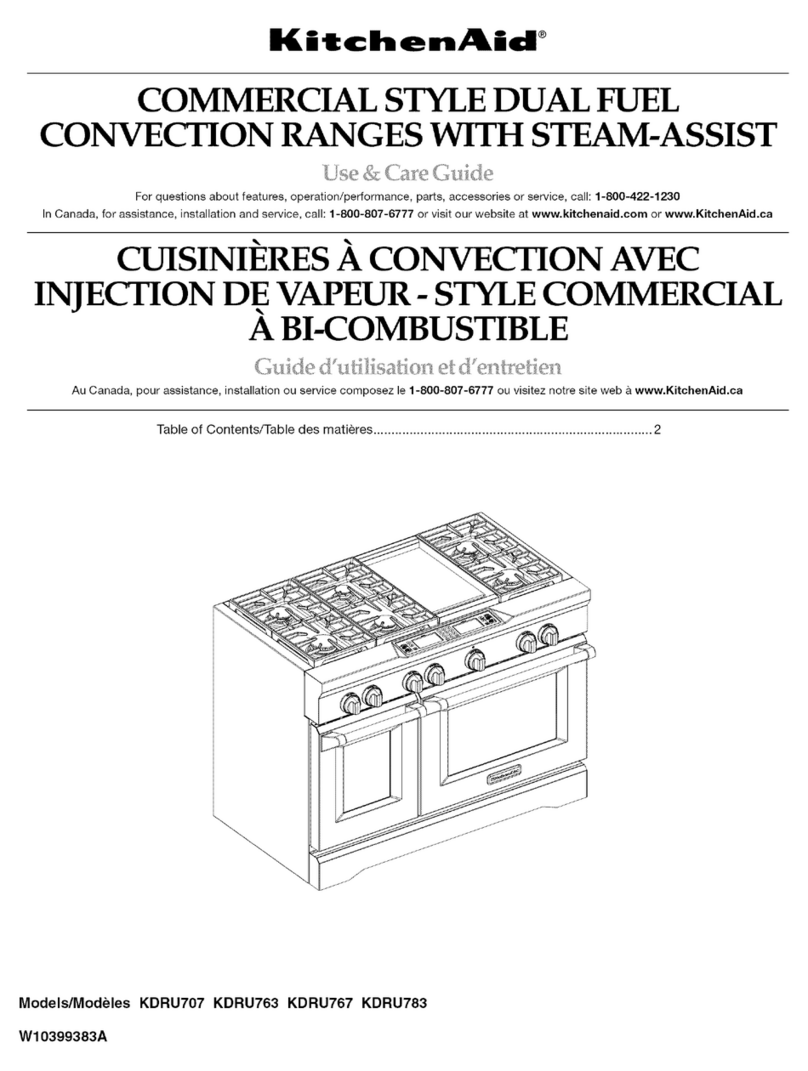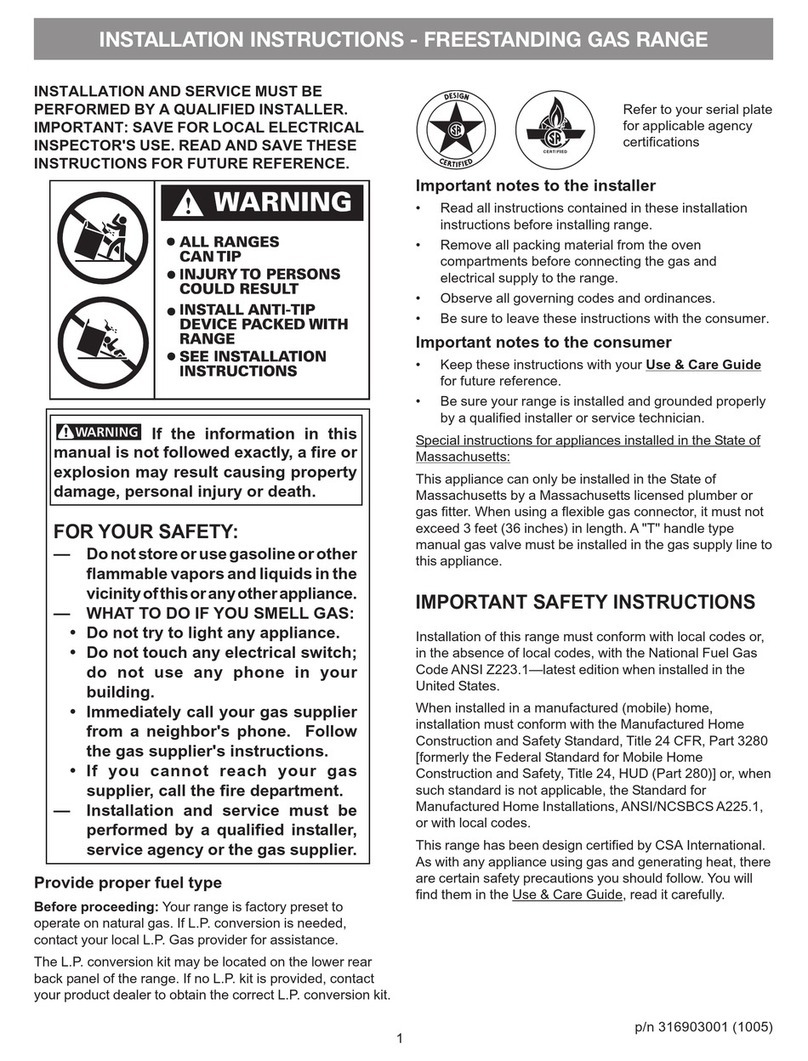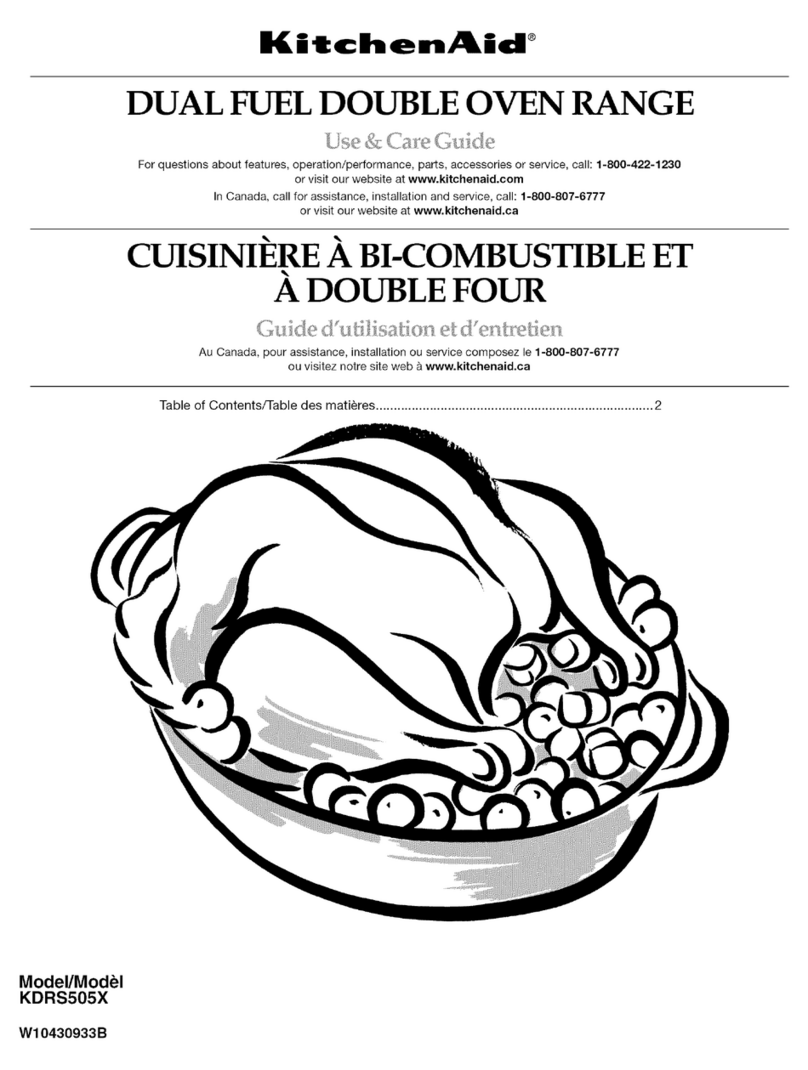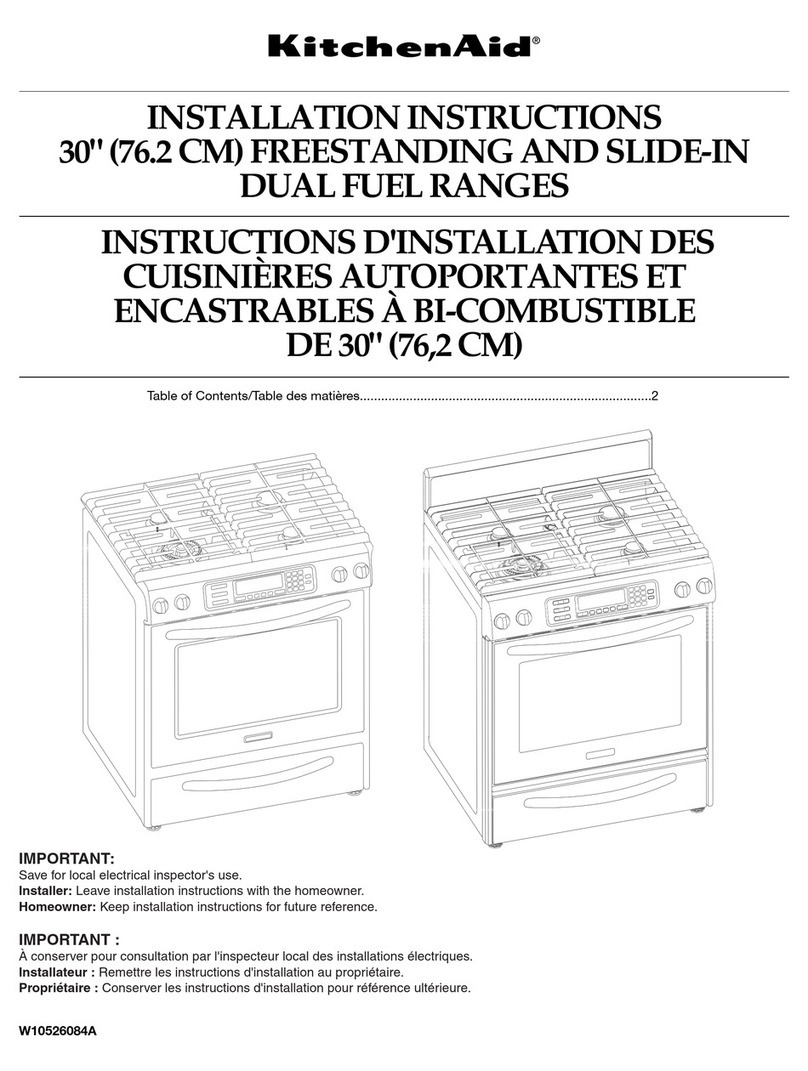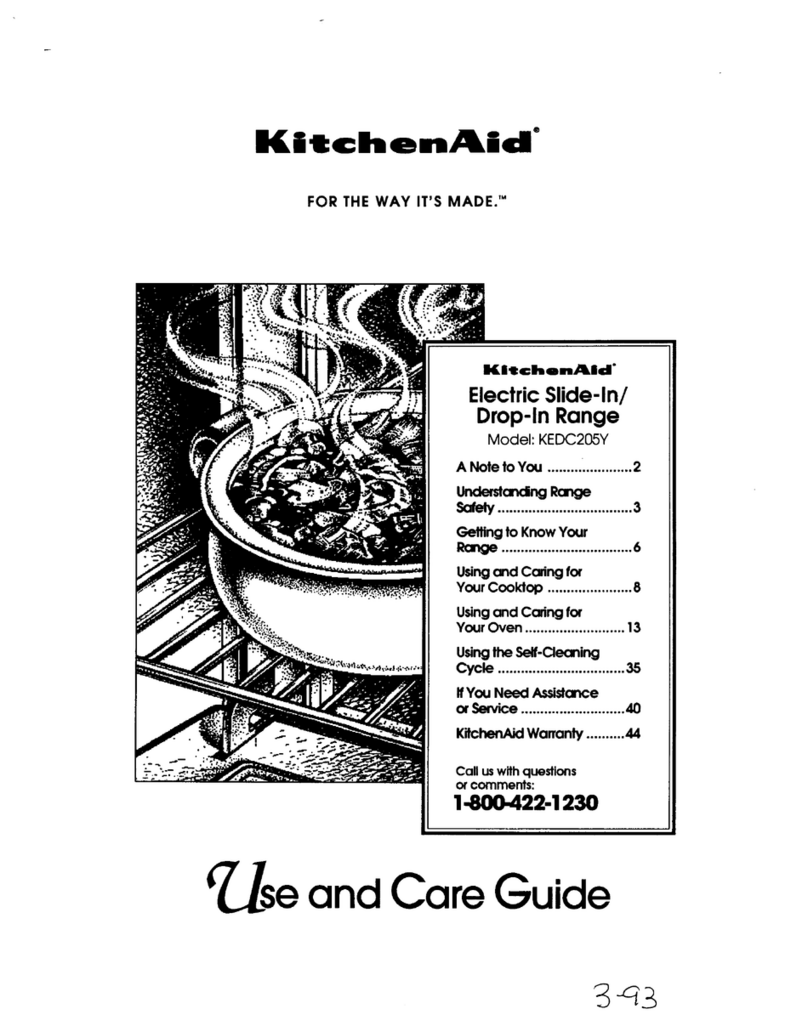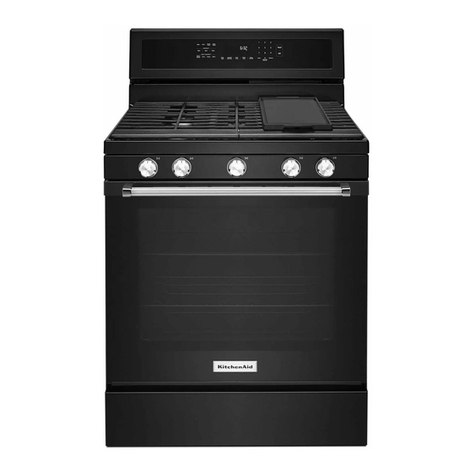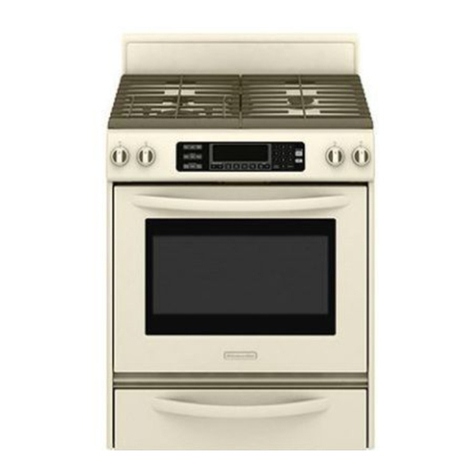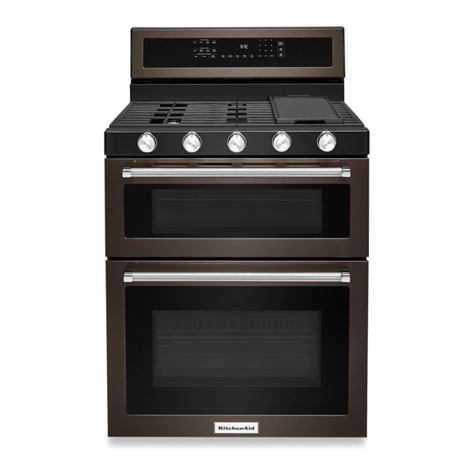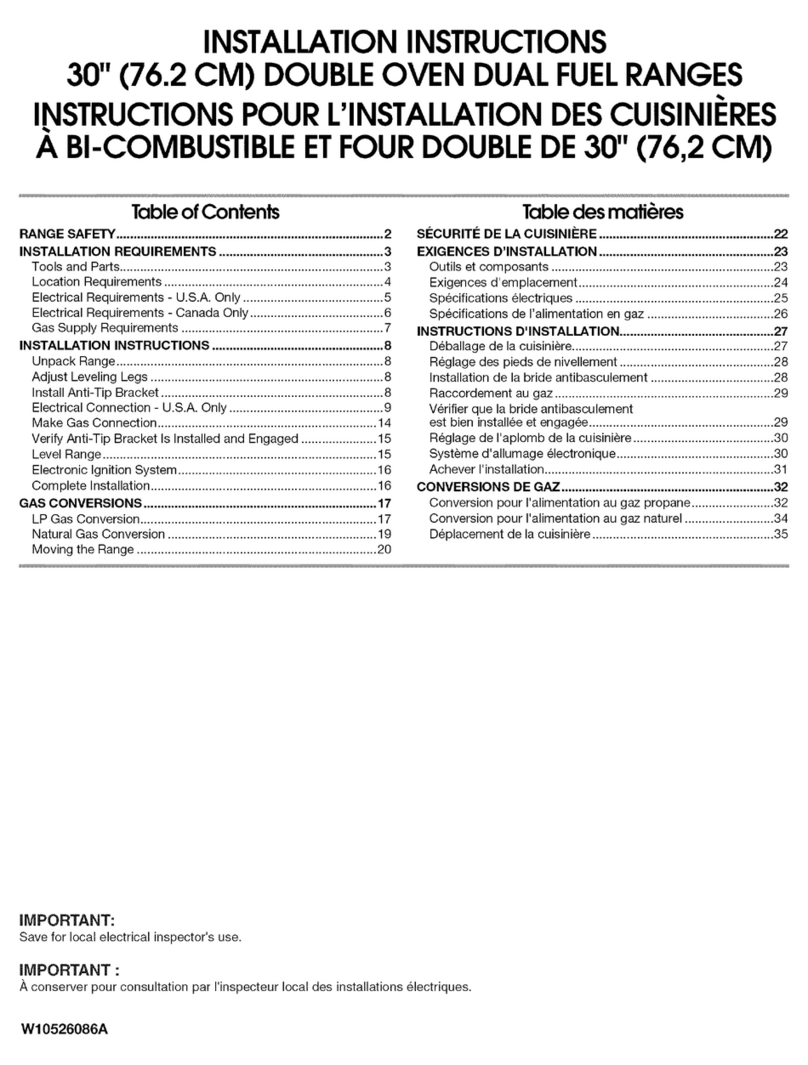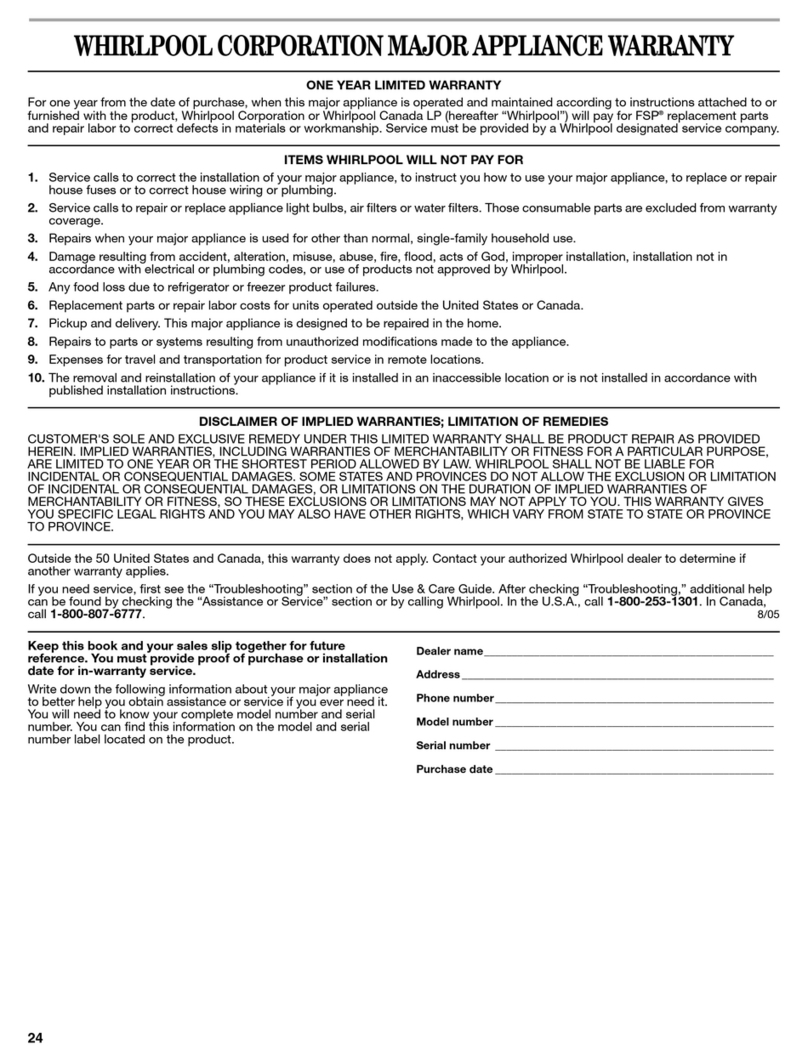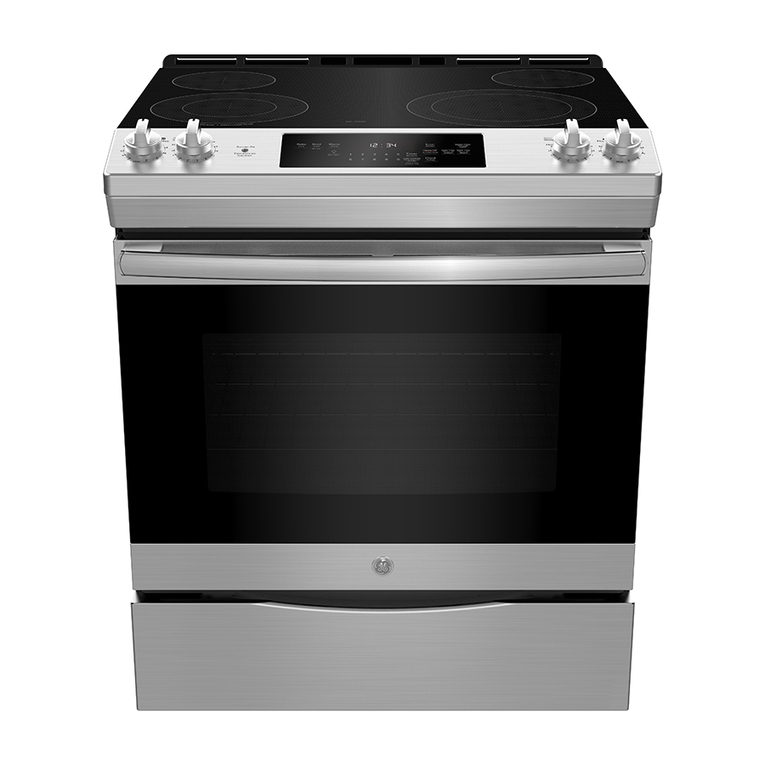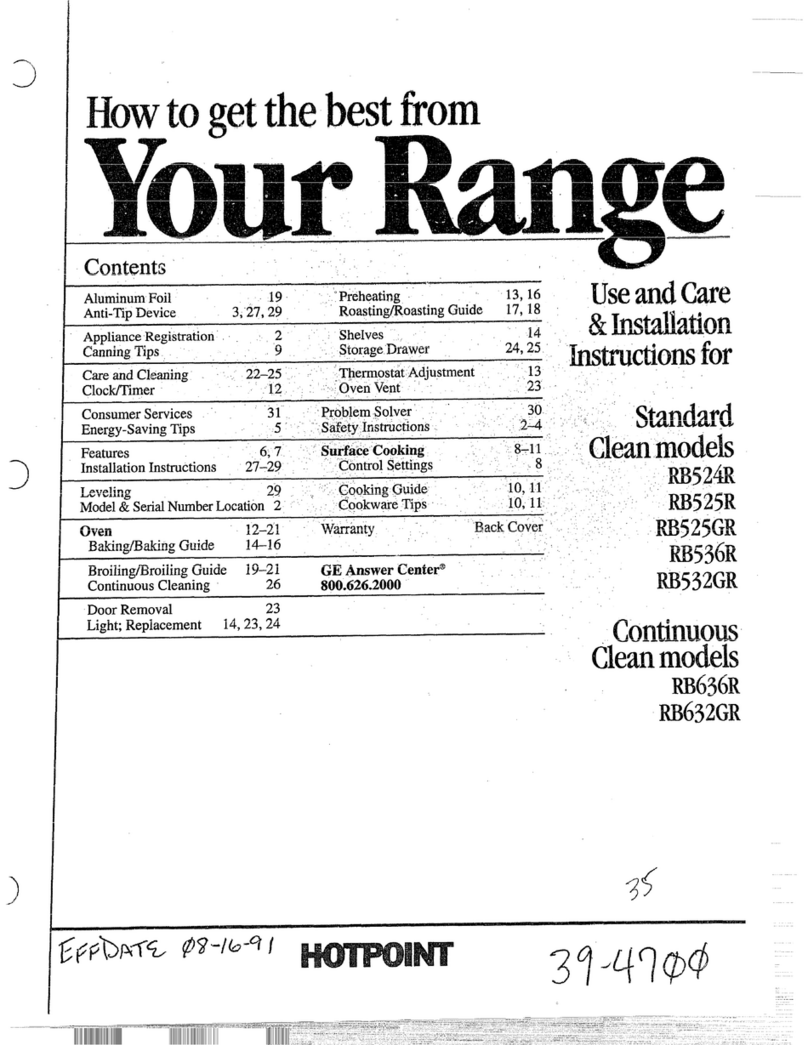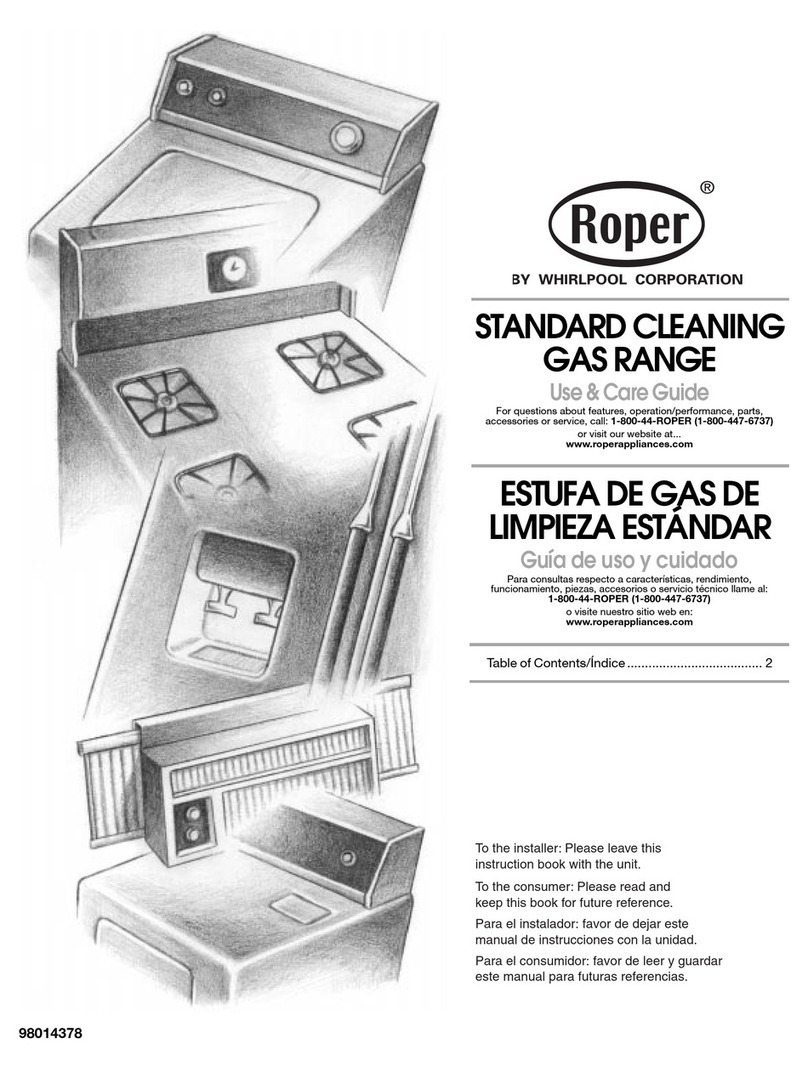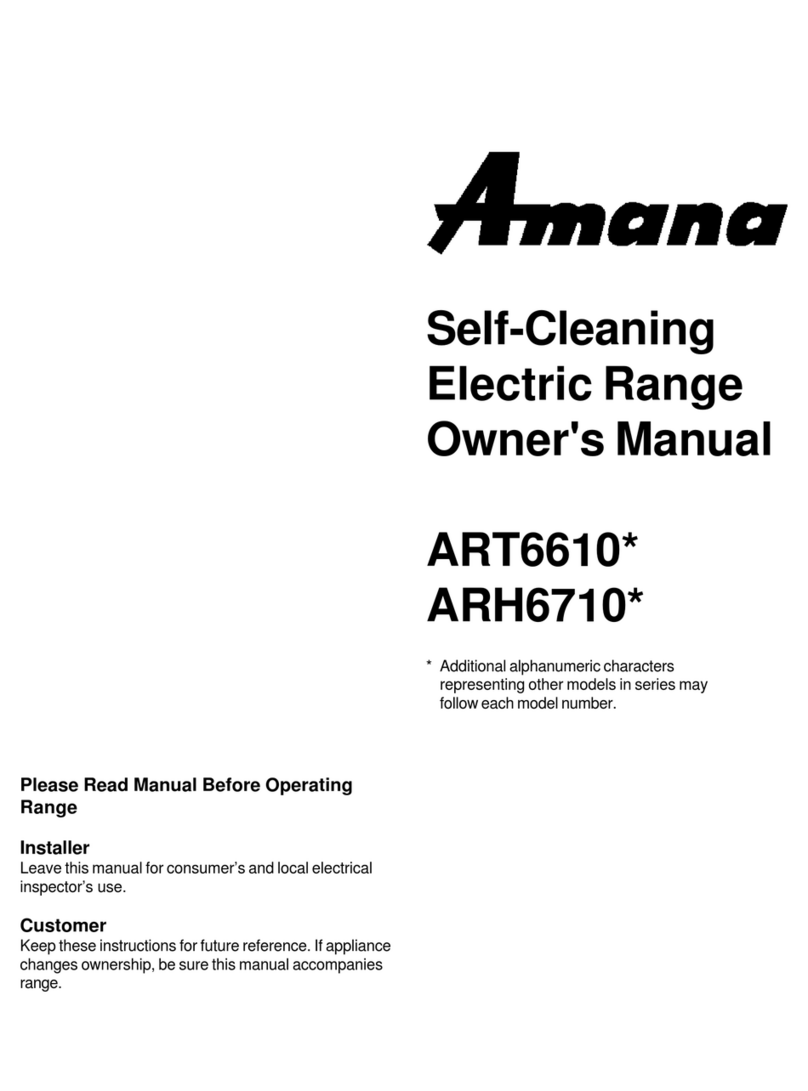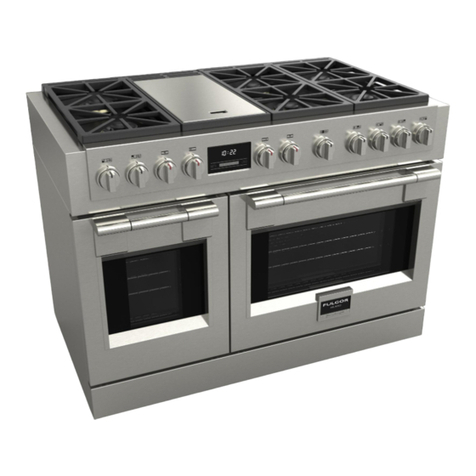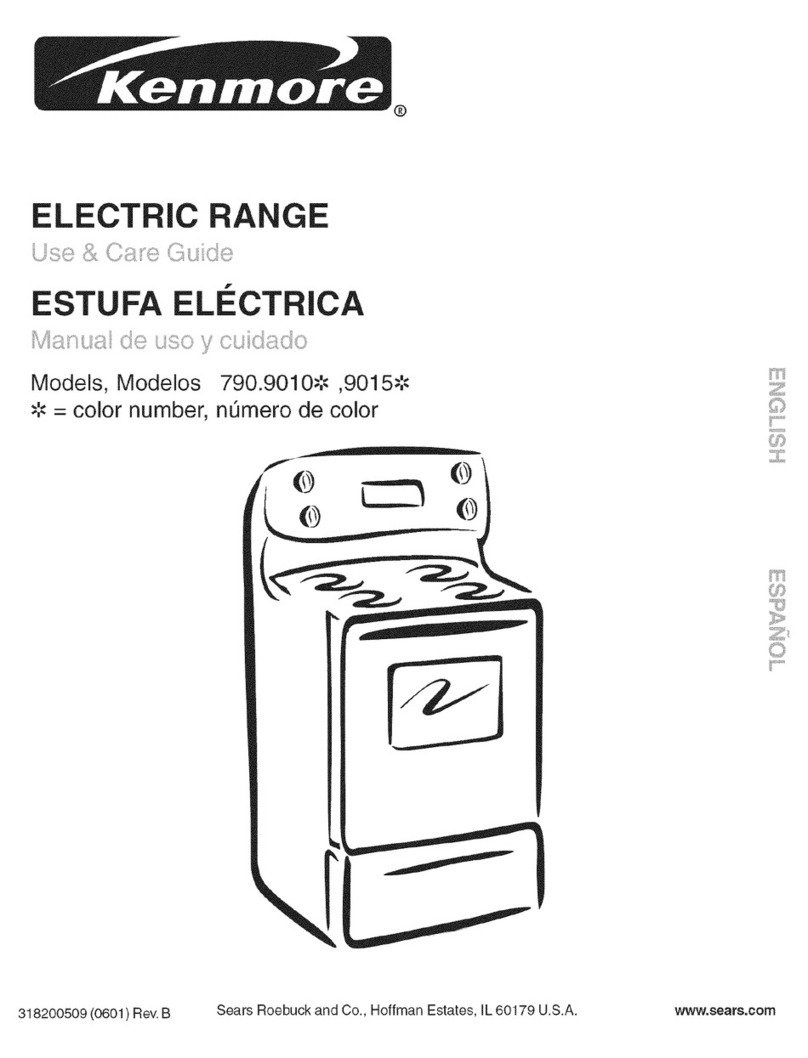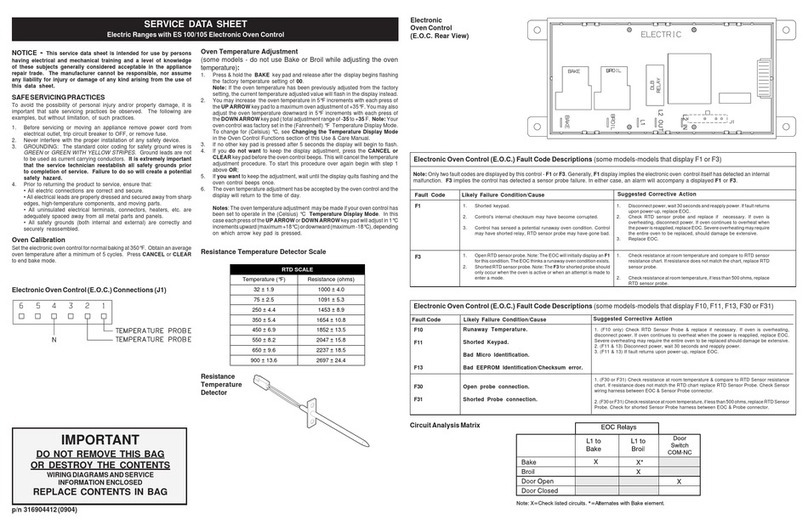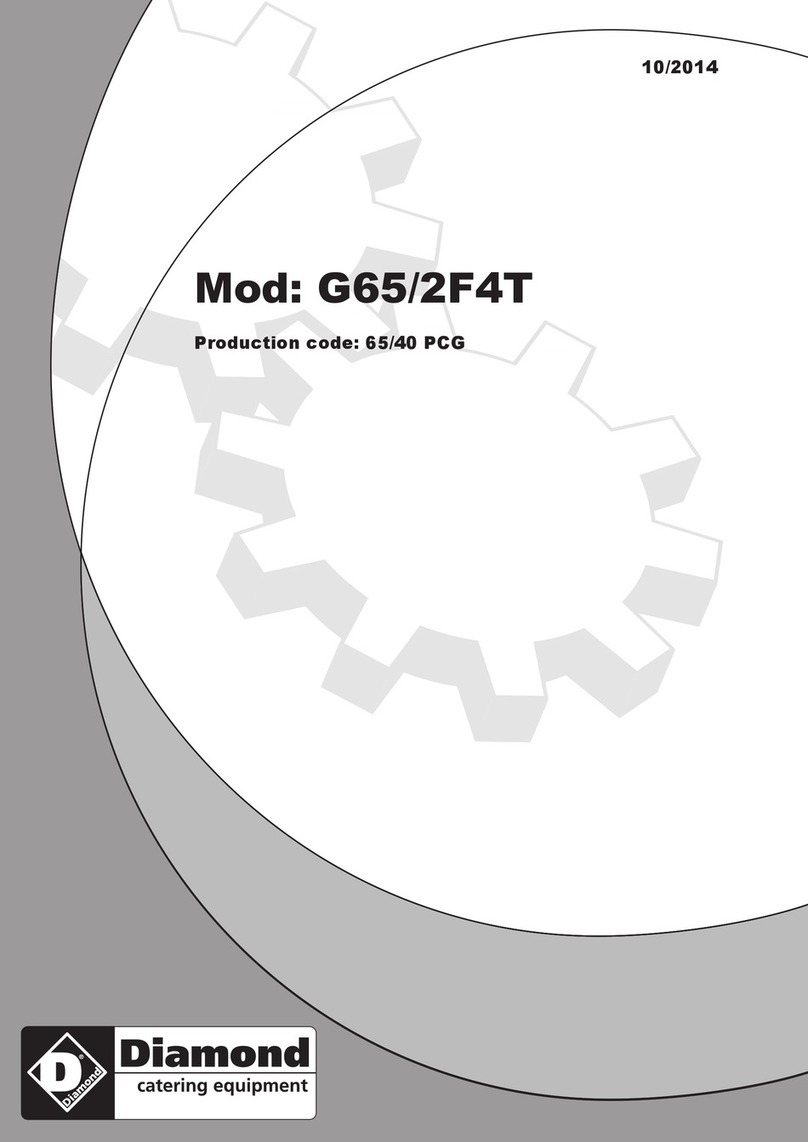
3
Save these instructions for future reference.
Important Safety Instructions
Read all instructions before using this appliance.
- indicates a potentially hazardous
situation which, if not avoided, may result in death or
serious injury.
- indicates a potentially hazardous
situation which, if not avoided, may result in minor or
moderate injury.
All ranges can tip.
Injury to persons could result.
Install anti-tip device packed with
range.
See Installation Instructions.
To reduce the risk of tipping, the
range must be secured by properly
installed anti-tip bracket provided
with the range. To check if the
bracket is installed properly, visually
check that rear leveling leg is
inserted into and fully secured by the
anti-tip bracket by removing lower
front panel or storage drawer from the
range.
For models equipped with a warmer drawer or lower
oven, grasp the top rear edge of the range and carefully
attempt to tilt it forward. Refer to the installation
instructions for proper anti- tip bracket installation.
This manual contains important safety symbols and
instructions. Please pay attention to these symbols and
follow all instructions given.
Definitions
This is the safety alert symbol. It is used to alert you to
potential personal injury hazards. bey all safety
messages that follow this symbol to avoid possible injury or
death.
Do not attempt to install or operate your appliance until you
have read the safety precautions in this manual. Safety
items throughout this manual are labeled with a WARNING
or CAUTI N statement based on the risk type.
Never mod fy or alter the construct on of a range by
remov ng the level ng legs, panels, w re covers,
ant -t p brackets/screws, or any other part of the
range.
Remove the oven door from any unused range if it is to be
stored or discarded.
Do not attempt to operate the range dur ng a power
fa lure. If the power fails, always turn off the range. If the
range is not turned off and the power resumes, the range
will begin to operate again. nce the power resumes,
reset the clock and oven function.
Stepp ng, lean ng or s tt ng on the door
or drawers of a range can result n ser ous njur es
and also cause damage to the appl ance. DO NOT
allow children to climb or play around the range. The weight
of a child on an open oven door may cause the range to tip,
resulting in serious burns or other injury.
Storage n or on appl ance
flammable mater als should not be stored n an oven,
near surface un ts or n the storage drawer, warmer
drawer or lower oven. This includes paper, plastic and
cloth items, such as cookbooks, plasticware and towels,
as well as flammable liquids. Do not store explosives, such
as aerosol cans, on or near the range.
Never use your appliance for warming or
heating the room.
DO NOT leave small ch ldren
unattended near the appl ance.The outside of the range
can become very hot to touch and can cause burns or
serious injury.
Remove all tape and packag ng before us ng the
range. Destroy the carton and plastic bags after
unpacking the range. Never allow children to play with
packaging material.
Proper nstallat onBe sure your appl ance s
properly nstalled and grounded by a qual f ed
techn c an n accordance w th the Nat onal
Electr cal Code ANSI/NFPA No. 70 latest ed t on and
local electr cal code requ rements. Install only per
installation instructions provided in the literature package
for this range.
User serv c ngDo not repa r or replace any part of
the appl ance unless spec f cally recommended n
the manuals. All other servicing should be done only by
a qualified technician, This may reduce the risk of
personal injury and damage to the range.
Ask your dealer to recommend a qualified technician and
an authorized repair service. Know how to disconnect the
power to the range at the circuit breaker or fuse box in
case of an emergency.

